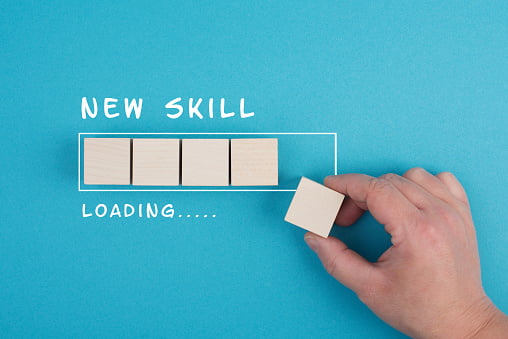The Role Of Technology In Modern Learning And Development Strategies

The Role Of Technology In Modern Learning And Development Strategies – Technology has become an indispensable part of modern Learning and Development (L&D) strategies. Its impact is not limited to traditional classrooms but extends to online learning, virtual reality, and other digital platforms. In this article, we will explore the role of technology in L&D strategies and how it can help organizations achieve their learning goals.
Read: Jobs in Learning and Development
The Benefits of Technology in Learning and Development Strategies
One of the key benefits that technology offers in L&D is its efficiency and flexibility. With the recent advances in AI and e-learning platforms, learners can gain knowledge and skills more efficiently than ever before. They can learn at their own pace and research topics that interest them. Technology also enables learners to engage in continuous education while managing other aspects of their lives, like work and family.
Another benefit of technology in L&D is its ability to appeal to diverse learning styles. By incorporating digital tools, resources, and platforms, learners can engage in active participation and build self-directed learning abilities.
Technology also provides opportunities for continuous learning and upskilling, allowing employees to expand their knowledge base without any geographical boundaries.
Key Focus Areas for Developing a Successful Digital Learning Strategy
To develop a successful digital learning strategy, organizations need to focus on key areas such as technology strategic planning, modern instructional design, and content design. Technology strategic planning plays a crucial role in aligning technology initiatives with overall business goals, anticipating challenges, and optimizing resource allocation. It also helps organizations collaborate with stakeholders and get their buy-in.
Modern instructional design is another critical area that organizations need to focus on. It involves designing learning experiences that are engaging, interactive, and contextually relevant.
By incorporating gamification, simulations, and other interactive elements, organizations can create learning experiences that are both fun and effective.
Content design is also an essential area that organizations need to focus on. It involves creating learning materials that are visually appealing, easy to understand, and accessible. By incorporating multimedia elements like videos, infographics, and animations, organizations can create learning materials that are engaging and memorable.
How Has Technology Changed the Way we Approach Learning and Development
Technology has significantly transformed the approach to learning and development. With the advent of digital tools and platforms, students now have access to a global learning environment, enabling them to learn in new and innovative ways. Collaborative learning has been revolutionized, providing more opportunities for students to work together and engage in interactive learning experiences.
Additionally, technology has changed the roles of teachers and students in the classroom, allowing for more personalized and adaptive instructional approaches. The learning environment has evolved, offering students more choices than ever before, whether through in-person or online education.
Furthermore, technology has expanded access to education, making it possible for students to learn anytime and anywhere. Overall, technology has increased interactivity, class engagement, and overall comprehension, making a profound impact on the education field.
How Has Technology Impacted the Role of Teachers in Modern Learning and Development Strategies
Technology has had a significant impact on the role of teachers in modern learning and development strategies. With the integration of technology in the classroom, teachers have had to adapt to new teaching methods and approaches.
Technology has enabled teachers to create more interactive and engaging learning experiences for their students. They can use digital tools and platforms to create multimedia content, interactive quizzes, and simulations that help students learn in a more engaging and effective way.
Additionally, technology has enabled teachers to personalize learning experiences for their students, allowing them to tailor instruction to individual student needs. Teachers can also use technology to track student progress and provide feedback in real-time, which helps students stay on track and improve their learning outcomes.
Overall, technology has transformed the role of teachers from being the primary source of information to being facilitators of learning, guiding students through the learning process and providing them with the tools and resources they need to succeed.
What are Some Potential Drawbacks of Relying Heavily on Technology in Modern Learning and Development Strategies
Some potential drawbacks of relying too heavily on technology in modern learning and development strategies include:
1. Faster but Less Memorable Learning: Technology can lead to faster learning, but this may result in less retention of the material, as the information is not as deeply processed and remembered.
2. Distraction and Reduced Social Interaction: Over-reliance on technology can lead to increased distraction and reduced direct social interaction among students, impacting their ability to engage in face-to-face communication and collaboration.
3. Poorer Learning Outcomes: Using technology without sufficient care and knowledge can lead to poorer learning outcomes and cause students to struggle. Educators may lack the time and knowledge to implement technology effectively, which can hinder the learning process.
4. Skill Replacement and Dependence: Over-reliance on technology may lead to the replacement of certain skills, such as problem-solving and critical thinking, by technology. This can create a dependence on technology and hinder the development of essential cognitive and academic skills.
It’s important to find a balance in the use of technology in learning and development to mitigate these potential drawbacks and ensure that students receive a well-rounded education that incorporates both technological and traditional learning methods.
Conclusion
Technology has become an integral part of modern L&D strategies. Its benefits include efficiency, flexibility, and the ability to appeal to diverse learning styles. To develop a successful digital learning strategy, organizations need to focus on key areas such as technology strategic planning, modern instructional design, and content design. By incorporating these elements, organizations can create learning experiences that are engaging, effective, and aligned with their overall business goals.




